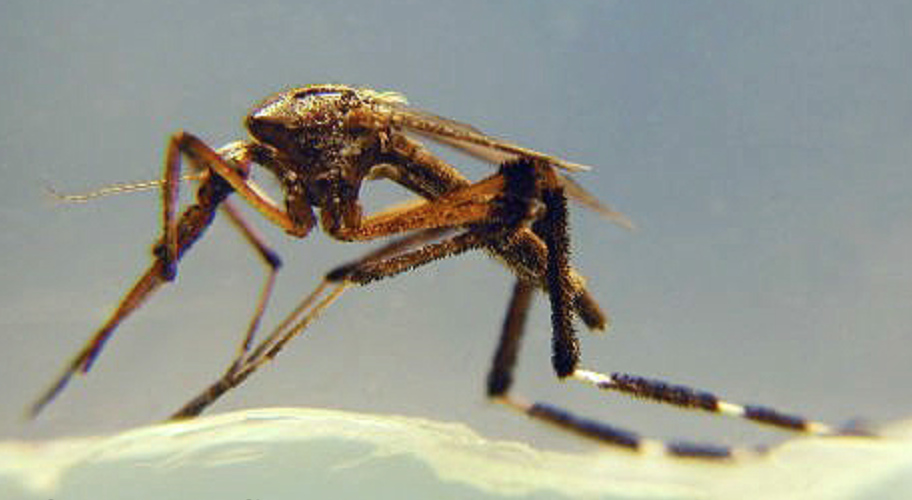On a summer evening, any given Southern backyard is a gauntlet of mosquitoes—perhaps a mix of species raining down like the tiny serrated knives they are. Generally, their irritation factor is a matter of quantity, not quality. But there’s one species that packs a punch even without an army of fellow ankle biters. Meet Psorophora ciliata, better known as the American giant mosquito or, in delightful Southern parlance, the gallinipper, a name inspired by the gallon of blood it is said to drink.
This supersized skeeter is about the size of a dime—or “with its legs totally stretched out, potentially a nickel,” says Eva Buckner, assistant professor of medical entomology at the University of Florida. Found throughout the eastern United States in rural and suburban areas, the giant mosquito emerges only after a very heavy rainfall or flood. It lays its eggs in damp earth, and those eggs sit tight until the next deluge.
And we do mean sit tight. “The thing about these mosquito eggs is they can actually remain dormant in the environment for months to years, like an egg bank that’s being built up over time,” Buckner says.
Here’s more bad news about the pest:
They’re more aggressive than other mosquitoes.
“They will absolutely chase you, and they are likely to bite you at any time of day,” Buckner says. (The blood of humans and other vertebrates contains nutrients critical to their egg development.) She describes her own run-in with giant mosquitoes, which occurred while doing field work in South Georgia in 2008 after Tropical Storm Fay. Despite being outfitted in protective netting, she found herself sprinting to escape them and later discovered one had hitched a ride in her truck. “It was just coming right at my face,” Buckner recounts. “Luckily I was still in the middle of the woods. I would have been that person in traffic just all over the road.”

Their bites hurt.
Everything about larger mosquitoes is on a larger scale—from the amount of saliva injected into the skin to the size of the proboscis (the serrated mouthpart) to the amount of blood they draw (though Buckner can confirm a gallon is hyperbole). Expect a bite that’s bigger and more painful than a typical mosquito bite but milder than a bee sting. Itchiness varies from person to person; if you tend to claw at common mosquito bites, you can probably predict your reaction to a giant one.
But there’s good news:
They’re not known to carry diseases.
It turns out the daintier mosquitoes are more dangerous. Both the northern and southern house mosquitoes, for example, are vectors of West Nile Virus, while the Asian tiger mosquito—ubiquitous in much of the South—is known to transmit Dengue and Chikungunya viruses in other parts of the world. (PSA: Do your part and dump standing water in your yard once a week.)
Their larvae are cannibalistic.
“The majority of the larval stage—the stage that hatches out of the egg, sometimes I call them ‘wrigglers’—is actually predaceous,” Buckner says. Consequently, they feed on other mosquito larvae, including their own kind. But Buckner doesn’t recommend deploying them as a mosquito-control agent—for various reasons mentioned above.
More floods don’t necessarily mean more giant mosquitos.
Constant heavy rains in the same place actually dilute the number of available eggs to hatch, she says. When a flood follows a period of drought, however, keep an eye out for coin-sized mosquitoes.
They’re easily confused with crane flies.
Crane flies also thrive in wet areas and look a lot like giant mosquitoes, and while any inch-long insect might send you scrambling for the fly swatter, the former are quite harmless. Buckner suggests looking out for a beak-like part of the head called the proboscis; if it’s got one, it’s a mosquito. Crane flies are also wispier than their bloodsucking doppelgangers—a helpful tip if you’re not angling for a close study.








